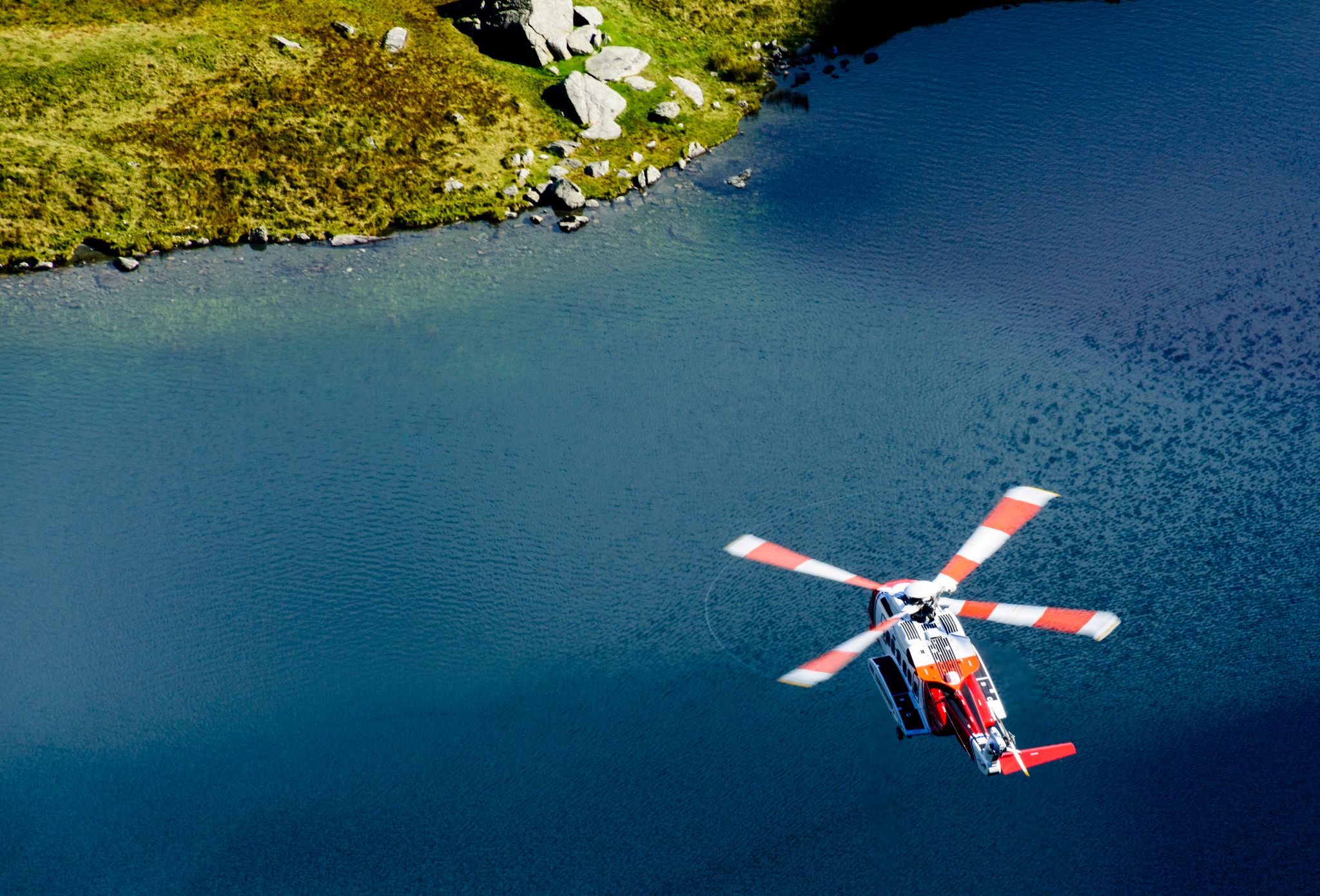Specialty Podcast: What You Need to Know About Insurance Policies for Privately Owned Aircraft
By Alliant
Mark Shichtman and Lou Timpanaro, Alliant Aviation, discuss key considerations, aviation insurance risk factors and multiple aviation coverage options when traveling private versus commercial.
Intro (00:00):
You're listening to the Alliant Specialty Podcast, dedicated to insurance and risk management solutions and trends shaping the market today.
Lou Timpanaro (00:09):
Today, we're going to talk about aviation considerations for private clients. I'm Lou Timpanaro, who heads up the aviation department for Alliant Aviation Services. Joining me today is Mark Shichtman, and with that, Mark, can you tell us a little bit about yourself to get started?
Mark Shichtman (00:27):
Sure, Lou, thank you very much for having me today. My name is Mark Shichtman. I run the General Aviation unit here at Alliant insurance services in New York. I have 31 years of experience in the business as an Aviation Broker. In addition, I'm also a licensed airline transport pilot with 4,100 hours and an active flight instructor. This gives me a unique advantage in the industry because I can see the risk from both sides. And it is a pleasure to talk with you today.
Lou Timpanaro (00:55):
Thanks, Mark. Can you tell us what are the various uses of aviation for the private client?
Mark Shichtman (01:03):
Well, on average, we've narrowed this down to seven different types of exposure to aviation ranging from airlines right down to owning an aircraft and even using unmanned aircraft vehicles or drones.
Lou Timpanaro (01:16):
On the subject of airlines, what if the private client customer flies on a commercial airline?
Mark Shichtman (01:25):
Well, that exposure is fairly limited. It's the most common exposure to aviation, because, let's face it, most people do fly on airlines, and there's not much to think about there with respect to risk management because the airline flight is happening, whether or not the client is on board. It's scheduled and it's going either way. So, there's really no way for anyone to say that it's the customer's fault or the passenger's fault that the aircraft was in the air or that it hit something or damaged something or hurt someone. So, we don't spend too much time talking about this in risk management circles, airlines do provide government-regulated insurance it's relatively limited and it typically is just fine. It should be noted that there are products out there that people may purchase for non-owned aircraft liability insurance. However, that insurance typically will not cover an airline flight because those policies have seating limitations, which are way lower than an airliner would have. But again, usually, not too much to think about there. There's very, very little exposure.
Lou Timpanaro (02:28):
What if they fly on someone's private plane or they're on an aircraft someone else charters?
Mark Shichtman (02:35):
There's again, not too much exposure, but a little something to think about. They may ask for a certificate of insurance, from the owner or operator, naming them additional insured. However, this is pretty rare. If you're going to go in a friend's aircraft or a relative's aircraft, typically you would not be found to be the approximate cause of any kind of an accident, and therefore, probably not too much to think about there.
Lou Timpanaro (03:00):
How about if the private client is a pilot himself or herself and rents an aircraft?
Mark Shichtman (03:07):
Well, now we do have some risk management items to think about because now you are the proximate cause of the aircraft being in the air and would likely be found to be negligent if something goes wrong. So, in that situation, if you're renting it from a flight school, you'd want to make sure that you're additionally insured in that flight school's policy, same for a flying club. Maybe you already have your license and you're a member of a flying club that club will have insurance in their name and can name you as additional insured. If you are interested in being more risk averse than that, you can also purchase non-owned aircraft liability or renter's insurance, which will provide you with your own coverage, that puts your interest first.
Lou Timpanaro (03:49):
Tell me about the particulars risk management if the private client charters an aircraft.
Mark Shichtman (03:55):
So that's a great question because you're going to see more and more of that in terms of frequency with our private client customers. In this situation, because the flight would not have gone whether or not you were on the aircraft. The customer is considered the approximate cause of the aircraft being in the air. We break the charter customers down into two buckets. One is occasional charters, and the other are frequent charters. If you're an occasional charterer, it's actually relatively easy to protect yourself. You simply need to have the operator of the charter. Who's ensuring the aircraft name you as additional insured on their policy and provide you with a certificate of insurance that shows you as additional insured, provides you with a waiver of subrogation and provides you with a 30 days notice of cancellation provision? Now in the event that you're a frequent charterer, in addition to getting the certificate of insurance with those three provisions, you should also consider purchasing non-owned aircraft liability insurance, which would be in your name, put your interest first and would respond excess of the valid and collectible insurance provided by the charter company. Now, when you're relying on the charter customers' policy, you should give some thought to the adequacy of the limits that they are carrying.
Lou Timpanaro (05:07):
That's great information, Mark, you talked about chartered rented and non-owned aircraft situations. What if the private client owns and operates an aircraft?
Mark Shichtman (05:19):
Well, there is the most exposure that you could have because you are most in control of the aircraft. In that situation, you may have a light aircraft, which you ensure yourself via home liability policy, or you may have a turban or jet aircraft, which you either insure yourself and maintain your own flight department, or you may use an aircraft management company and there's pros and cons to doing both. If you use a management company, it's most convenient for the user, because the costs are usually lower, because they get an economy of scale by having a multi-aircraft fleet and their administration and claims costs are done for you by the management company. In this situation, you are not the insurance company's customer, the management company is, and your interest may not necessarily be aligned with the management company in the event of a claim. Now, on the other hand, they may have their own policy. And if that's the case, that's the best situation because they are in control of their own destiny. They are the customer of the insurance company, and the policy is designed to put their interest first. In addition, they get the benefit of insurance brokerage services like contract reviews, lost control services, and when it happens, claim services. In that situation, you always want to be directly in contact with the adjusters because you can control the process with your broker. Typically, your own policy will cost 10% to 20% more than a fleet policy will cost the management company. And typically, that's less than a tank of gas on a jet aircraft and it's definitely a price worth paying to control your own destiny in the event of a claim.
Lou Timpanaro (06:51):
That's good advice, Mark. Now let's turn to fractional ownership. As you know, fractional ownership is a preferred way to experience corporate travel these days. Can you talk a little bit about that form of aviation for us?
Mark Shichtman (07:05):
Absolutely. And it is a very, very hot topic as it's expanding in our business, and it's a great way for individual customers to have access to larger, more complex aircraft without having to dish out the multimillion dollars involved in owning one themself. Typically, in a fractional ownership, the management company provides the insurance and names the client as additional insured, for their share. However, there is a fairly significant risk management consideration here because you're going to have multiple different people relying on that insurance policy to protect them. So, in order to explain this, I like to refer to the management company's policy as a glass of water. And when there is a loss to the aircraft or someone is injured or property damage is sustained, that glass of water is going to be passed to the management company, to the other owners of the aircraft, and there may be as many as 14 of them, plus to every vendor that the management company may have named as additional insured, and this could be someone pumping fuel. It could be someone turning wrenches, it could be a flight attendant. It could be an original equipment manufacturer or someone acting as a contractor on the aircraft. It could be an awful lot of people drinking from that glass of water. And by the time it gets passed to the end customer, there may be very little left in it. So, the solution for that is something called a top-up policy, which would allow that glass of water to be passed around to all of these different entities. And when it gets returned to you for your drink, it refills the water all the way to the top of that glass of water.
Lou Timpanaro (08:43):
Okay. Last but not least. What if the private client customer uses drones or unmanned vehicles? Can you share some of the nuances of this new technology?
Mark Shichtman (08:55):
Well, drones are the hottest topic in aviation these days because they're very, very readily available and it seems like everyone has one and the people operating them range in skill level, from skilled pilots who understand the dynamics of flight and understand the airspace that they're flying it in, right down to the kid that buys one at a box store. There are particular things to think about here. With respect to insurance, there is home liability insurance for drones that is now readily available for multiple insurance companies at a very reasonable premium, but it's not just the obvious damage from the drone that needs to be considered. Obviously, if the drone flies into something or someone there could likely be exposure there, but drones have cameras. They carry payload sometimes which could have their own sets of things to think about.
Lou Timpanaro (09:49):
Mark, thank you for that overview today and for leaving off on drones. We'll talk a little bit about that more on our next podcast. If anybody wants additional information, please turn to our website, www.Alliant.com. And we look to seeing you on our next podcast. Thank you.
Alliant note and disclaimer: This document is designed to provide general information and guidance. Please note that prior to implementation your legal counsel should review all details or policy information. Alliant Insurance Services does not provide legal advice or legal opinions. If a legal opinion is needed, please seek the services of your own legal advisor or ask Alliant Insurance Services for a referral. This document is provided on an “as is” basis without any warranty of any kind. Alliant Insurance Services disclaims any liability for any loss or damage from reliance on this document.
Thanks for your message.
We’ll be in touch shortly
News & Resources




